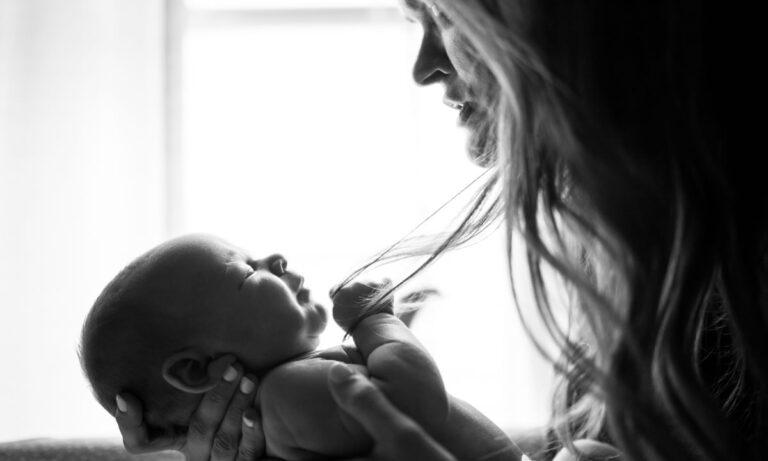Many attachment parents call me in bewilderment when their child’s behavior or development does not meet their expectations. “I did everything right for her!” says a young mother, “She was born peacefully, I carried her all the time, and she is still nursing and sleeping with us. Now that she is two years old, I am just not sure what to expect, or how to deal with her many needs.” Some parents have specific questions about eating, sharing, cooperation, and developmental stages. Others simply aren’t sure how much to limit, and how much freedom to provide. These issues can indeed be perplexing. We have no role models to follow, as most of us are not following in our parents’ footsteps.
We all love our children and want the best for them. We want to follow our hearts, our intuition, and most of all, our children’s cues. At times, our own childhood may make it difficult for us. Even the best and most loving parents sometimes respond to their children in a less then loving and kind way. This often stems from past hurts being restimulated by the child. How can we learn to care for our children in a loving way, without the interference of our own past painful memories?
Attachment parenting is the shortest route to knowing a child’s needs, and trusting and responding to their cues is the best way to avoid mingling our own issues with their care. Yet even then, we sometimes miss. It is relatively easy to trust a baby: nurse, change, burp, rock, and sleep. As the little newcomer starts acquiring physical independence, things may flow just as easily, or she may take a direction that bewilders us, and we are not sure what to allow and what to restrict.
Toddlers need our leadership. They need clear, gentle guidance as well as our support and our “vote of confidence”. The beauty of being a leader is that the best way to lead is actually to follow.
When a young mother consulted me on how to stop her 2-year-old son from throwing his spoon and fork on the floor after each meal, I asked her how she was feeling about his behavior. She said she had been grinding her teeth with anger and frustration while trying to prevent him from developing bad table manners. But as she listened to her own inner conversation, she was able to separate her emotional reactions from the real needs of her child. She remembered the pain of feeling “used” as though she was the “slave” in her family. She recalled having to do chores she hated to do, and being scolded and shamed when she didn’t do them well enough. She also remembered the pain inflicted on her if she acted with childlike freedom and the inner fear that prevented her from being fully curious and vivacious as she grew up.
As she realized that her negative reaction to her son’s behavior was based on her own past hurts, she could see what was really going on for him: he wasn’t exhibiting “bad table manners”; he was a young scientist, experimenting with gravity. When she was able to see things from her son’s point of view, she could then marvel at and enjoy his experiments as well as his other creative ideas. She could then play with him: she picked up the silverware, handed it back, and he dropped it again and again. They could both laugh at this because she was going with, and not against, his need.
Not surprisingly, the “throwing spoon and fork on the floor” game disappeared by itself as her little boy became interested in other things and activities. His general behavior improved, and his mother’s ability to enjoy him grew by leaps and bounds. She learned to see her son as an individual with his own perspective and his own motives. Every stage in a child’s life is there for a purpose. If we can respect and respond to their needs fully during each stage of life, they can be done with that stage and move on.
Empowering responsibility
My son Oliver, at age 2, was sitting in my lap to be read to. As soon as he was done with one book, he wanted another. I kissed him and said: “Put this book back in its place and bring whatever you want to read”. This was no difficult task, and he did so with a smile on his face. Oliver’s days are full of small and achievable tasks. Shoes come off when we enter the house. Then they go into the entry closet. Each toy is put away before choosing another one. Their father and I help, as needed, to keep things joyful and accomplishable.
Sometimes the mess is too overwhelming and I end up doing much of it by myself. My commitment to order, self-discipline, and responsibility is being modeled with, or without, my children’s participation. Watching me clean up the food that spilled on the floor, or voluntarily helping me with this task (at his request), are much better teaching tools for Oliver than being coerced to do it by himself before he is truly ready for that stage. Similarly, my gentle tone of voice, and my generosity and kindness in responding to his needs teach him what a million words would fail to convey.
By age 3, Oliver was asking me to clean up if food fell off the plate. He already cared. Yet my other children did not internalize that attitude until much later. Each child has a different built-in timetable of development. In a relationship built upon attachment, children internalize all the nuances of our ways of being, because they trust us. When we are self-disciplined, they follow our lead. When they experience our kindness and gratitude toward them, they become kind themselves, and when they watch our cooperation with each other and with them, they learn to cooperate.
Some people may say “No, my child doesn’t seem to learn”. In answer, I can assure them that he may not have learned yet, and he will. When he is full-size, he will be close to behaving like an adult. He may not live up to all of his parents’ expectations, instead, he will live up to his own: to grow, to fulfill himself, to belong, and to contribute. He will be uniquely himself.
A parent may have a “spirited” child, or may see her child as “different, not like others”. Each child is indeed unique. A parent can be attached, meet a child’s needs, be kind and loving, and still have unexpected difficulties. Some children simply have an unusual “blueprint of being”. In such situations, parents may need help learning to recognize the needs of their children. Children communicate in ways that are not always clear to parents. Although learning the special language of one’s child is easiest through attachment parenting, even then we can sometimes lose sight of the child’s inner reality.
Saying “yes” most of the time builds trust and cooperation
When a child becomes demanding, whiny, or less responsive, she is most likely feeling frustrated by unmet needs. The child’s tolerance to frustration and to “not getting her way”, has a lot to do with the degree to which she feels that life generally flows with, and not against, her needs. We need to say “yes” to our children’s needs as much as possible, and when that is not possible, we can still say “yes” to their feelings.
Respect and meeting their needs is the best way to assure happy and cooperative children. Play and experimentation are the “job descriptions” of a toddler, and he needs our vote of confidence in him. Making a sculpture out of mashed potatoes harms no one, is low-cost, and is cleanable. Running away from us at bedtime is an invitation for play, and taking apart an old phone is a learning adventure. Most no’s can turn into yes’s easily: “Yes, you like to cut books, here is a magazine you can cut.”; “I see you are making a lake out of your juice. Here, let me move your project to the sink.”; “Yes, you love to paint on the wall, here is a big sheet of paper.” and “Yes, you can play with the phone.” (I unplugged it).
When it is painless, safe, and simple to clean, we can be leaders by providing tools and by removing obstacles. Doing so helps the child feel worthy and helps her to trust our leadership, guidance, and intentions. She then responds to our leadership, not out of fear or intimidation, but simply because she wants to respond to us as lovingly as we have responded to her.
Providing leadership in tough moments
A three-year-old girl had a swim in Mom’s arms, which she greatly enjoyed. When she was finished swimming, she asked to be dressed and to play on the grass. As soon as she was out and dressed, she started whining, “Mom, I want to go home now”. Her mother told her that it was her brother’s turn to swim and that when he was done in 5 or 10 minutes, they would go home.
The little girl was adamant: “NOW!” she screamed. “I want to go home NOW!”. This mother wanted to meet the needs of both children. She validated her daughter’s feelings while touching her gently: “You want to go home now, and we are not going yet. You are sad and crying.” The little girl asked once more to go home and met with her mother’s validation, but not with any change of plans. Once her need for empathy was fulfilled, she stopped crying and played happily the rest of the time.
For many parents, the story is reversed: a child does not want to leave. The challenge is the same, however. The child wants something that is not possible, will be at the expense of another child, is unhealthful, or is otherwise not available. Parents may feel anxious to supply everything the child asks for, and can experience panic in the face of an upset or crying child. Being on our child’s side does not always mean it is possible to give them their wish. Most verbal youngsters are able to handle the simple limits of reality as long as we show them that we genuinely care and understand their feelings.
When will they learn to “behave”?
Parental expectations may be the greatest obstacle to a child’s development and a prime cause of difficulties. Children are doing their absolute best to learn, imitate our modeling, and to please us. We can trust them and guide them based on their readiness. They have a huge job ahead of them: becoming adults. They are in a rush and going as fast as they possibly can. Indicating to a child a need to grow even faster, can only lead to failure experiences and low self-esteem.
What leads most often to the difficulty are the common parenting techniques of punishment, including threats, deprivations, time-outs, bribes, insults, shouting, scolding, inducement of guilt, and other attempts at controlling the child. The best thing we can do as parents to ensure that our children will grow into compassionate, communicative, responsible, caring, and considerate adults is to treat them with those same qualities, and then trust them to model our behavior at their own pace.
Nursing on demand, holding, responding to cries, and co-sleeping form only a part of attachment parenting. A child will speak in a gentle tone if he hears his parents speaking kindly to him, and to others. He is likely to keep things neat if he has experienced others’ commitment to their surroundings. He will learn to share from being shared with, and from being respected when he is not ready to share. He will learn to say “thank you” by receiving and observing many expressions of gratitude. The only way to know when to expect the development of certain behaviors is by observation of the child. In the meantime, parents can lead not by controlling or instructing, but rather by example and clear, gentle guidance.
Here is a “declaration of complete confidence in children”:
- Adult-like behavior matures by the time we are adults.
- No expectations means no disappointments for us, and no damaging pressures for our children.
- Children respond best to modeling and leadership, not control.
- Trust… and wait.
- Choose between your momentary convenience and your long-term goal for your child’s sense of self.
- Enjoy your child for who he is, not for who you would like him to be – he will never be this age again.
- Distinguish between your emotional needs and what your child feels and needs. Act toward your child in harmony with her needs; take care of your emotional needs elsewhere.
- Celebrate your child’s uniqueness as well as your own.
©Copyright Naomi Aldort
Reprinted and adapted with permission of the author from “Kangaroo Kids”, a newsletter of Northwest Attachment Parenting, Issue 27, Autumn 1998.










